11 Tricks for Taking Beautiful and Striking Photos of Your Children
Isn’t photographing children just as difficult as photographing pets? They move all the time and we can hardly get them to pose naturally. For this, the best thing to do is to become a “documentary maker” and train your eye to capture the magical moments that happen every day.
At 5-Minute Crafts, we give you some little tricks for taking very good photos without any tools other than a camera.
1. Nothing more natural than mealtimes
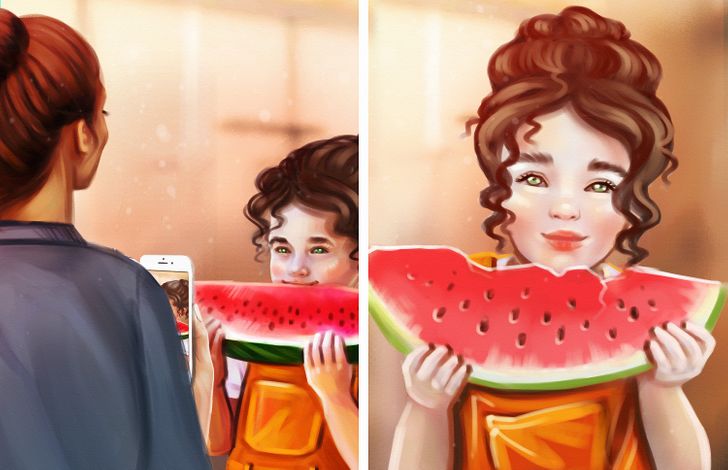
For very natural photos, let the scenes just happen. Capture the moment when your children are eating —it could be at breakfast or, for example, eating a special snack, like chocolate or ice cream. If they get a smudge on their face or hands, even better. Try to take the photo from the front.
- Trick: Place the phone or camera at the height of your child’s waist and take the picture from there.
2. Photos with bubbles
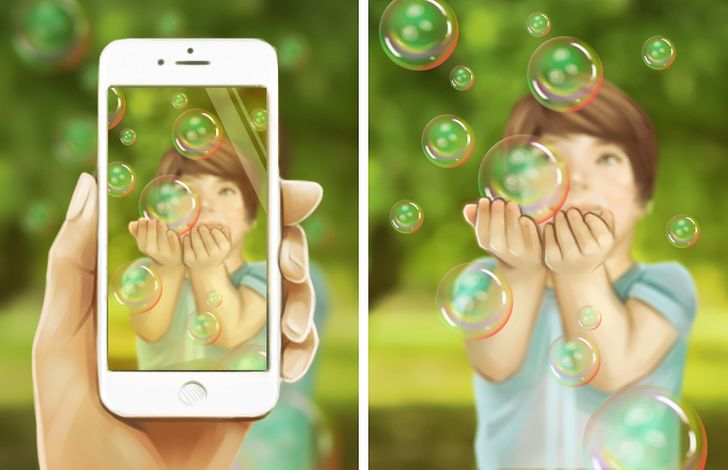
Playing with bubbles is something that children love. Take advantage of it and go out and take pictures of this moment. You can play with burst motion or use the bubbles to reflect the colors and light a bit.
- Trick: Set the camera to macro and ask your child to catch a bubble and hold it on his or her finger, focus right there — the effect will be that of a detailed photo with the bubble in the foreground and your child’s face in the background.
3. Pay attention to their hands and feet
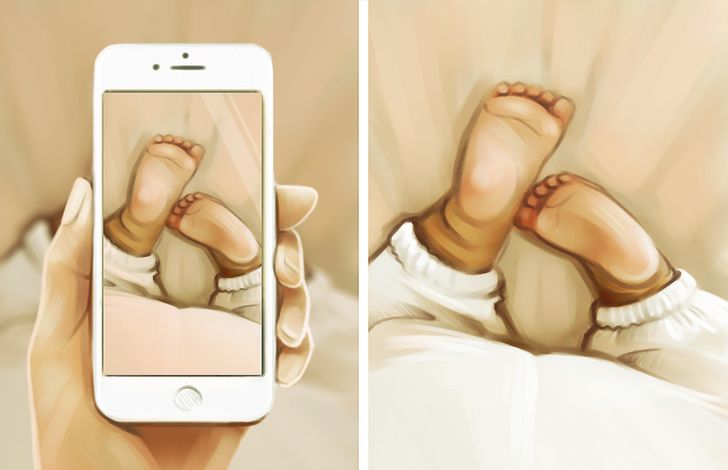
Your children’s hands and feet are small and adorable. Try to capture moments where you can see the movement they make with them. Focus on it, you will see that details count a lot. Plus, as the years go by, you’ll have a beautiful memory of this stage of their life.
- Trick: Activate the burst camera mode, this will allow you to take a lot of moving pictures.
4. Play with the perspective
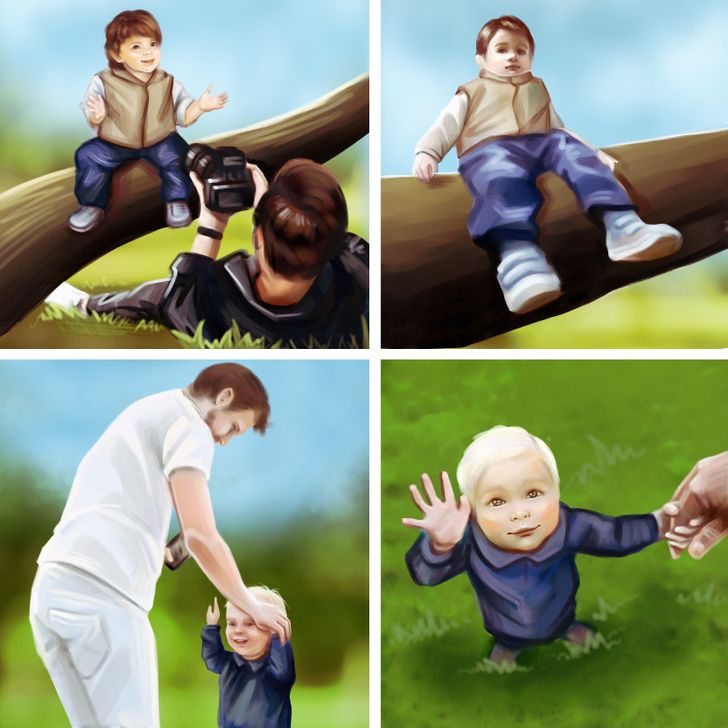
With our “adult eyes,” we hardly think about the world of children. Go back to your childhood and remember how the world looked from those eyes and take pictures from above and below.
- Trick: If your camera allows it, set the lens to “wide-angle,” lose your fear, lie down on the ground, and take a picture of your children from there. You can also place the camera from high above their head and get a height effect. Of course, always be careful to not drop the camera—safety first.
5. Look for reflections
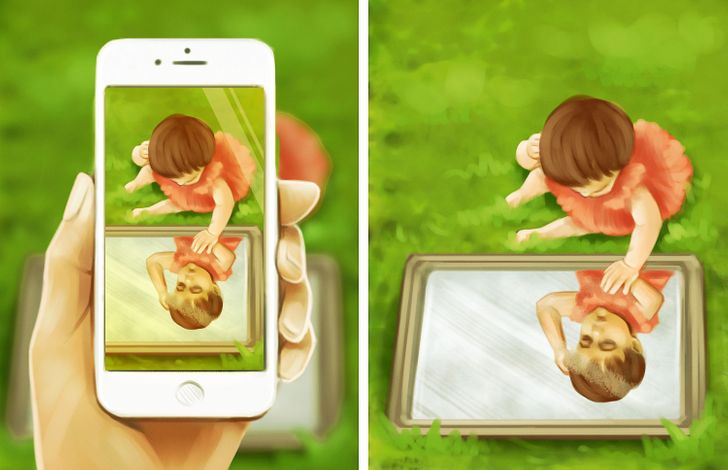
This can also be a fun game. Look for mirrors or windows at home where they can see a reflection and play with taking pictures of them making funny faces. You can even take a random moment, for example, while brushing your child’s teeth, and document the moment.
- Trick: Place the phone or camera almost “hidden” so that your reflection is not seen in the mirror. Although, if you prefer, you can also appear.
6. Play with colors
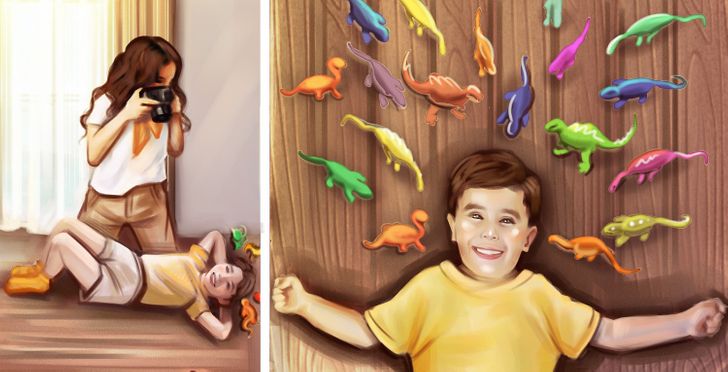
You can dress your children in their favorite garment, what color is it? If it has a solid color, it’s better. Now, you can look for an object at home that has the same color (for example, a balloon or a teddy bear). Put together a mini-set with these objects and others in a different color. Encourage your children to find the one that corresponds to the clothes they are wearing. Follow them with the camera ready to capture their expressions when they find the identical colored balloon or stuffed animal.
- Trick: Find a corner of a room that is brightly lit or take pictures outside. Take advantage of natural daylight.
7. Play with the light
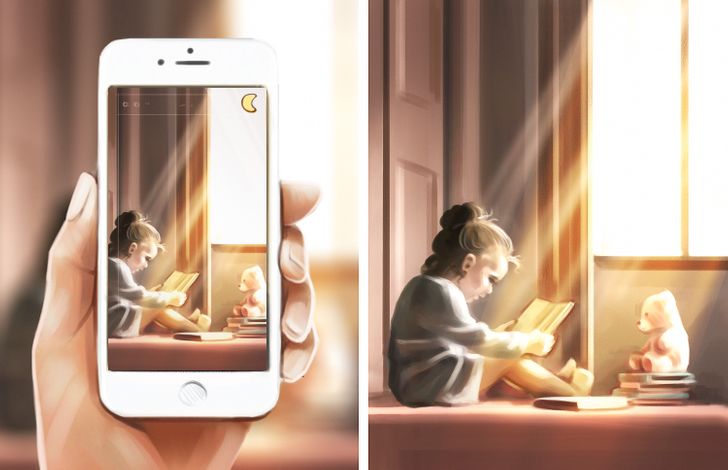
Professional photographers know that light is everything when it comes to photography. Look around the house and you will see that light behaves in a particular way everywhere: in the half-open blinds, in the windows, in the mostly dark rooms, and so on. Maybe this will be one of the few photos in which you can ask your children to be still, take the opportunity to tell them something relevant or ask them questions about their day, and you will find them in a very natural pose for their photo.
- Trick: Set your phone or camera to “night” mode. You can take pictures from the waist up or you can get further away and do full body shots. If your children move, you’ll get a sweeping effect.
8. Capture bedtime
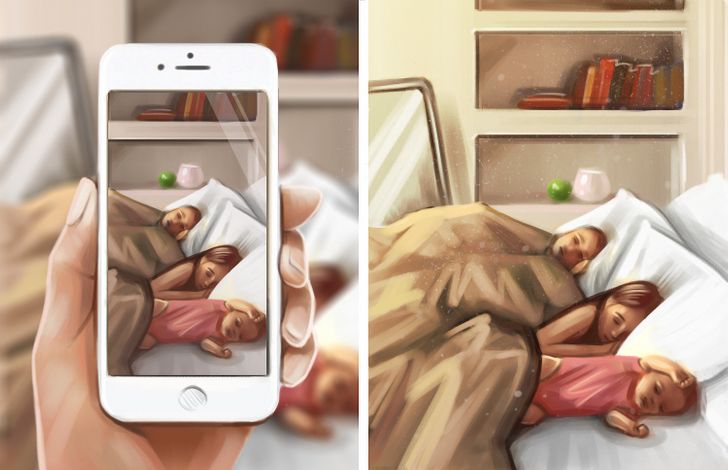
Bedtime or waking up time are cute moments (plus, they look adorable in their PJs). You can take really cool photos of your kids reading a story or of them already asleep. It can even be nap time.
- Trick: Set your phone or camera to “night” mode, this time try to keep your hand steady to get clear pictures. Make sure there is a lamp on even if the room is dark and don’t miss any detail, capture everything your daughter or son does.
9. Pay attention to their expression
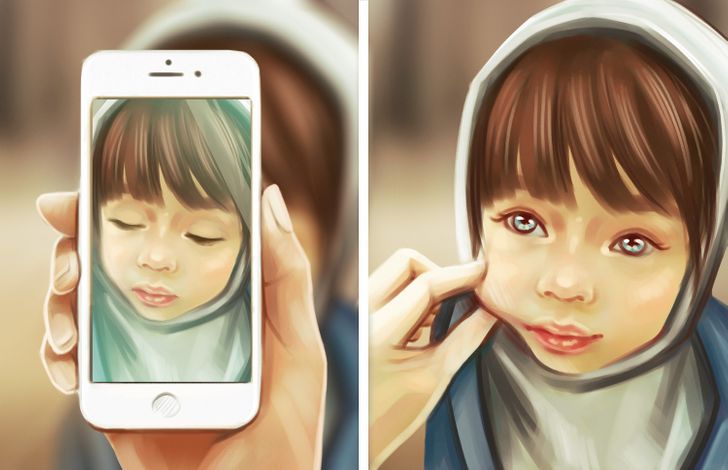
Children grow up very fast and their expressions change from one moment to the next. Think about this and ask yourself what you like most about your child’s face that you would like to keep a memory of forever. For example, you can focus on their eyes or their expression when they are very serious. Focus on the face whenever you can.
- Trick: Set your phone or camera to “portrait” mode. Look for times of the day when your child is concentrating hard or looking at something intently. If you know that some activity triggers the expression you are looking for, create it. For example, give them a book to read.
10. Take advantage of empty rooms or walls
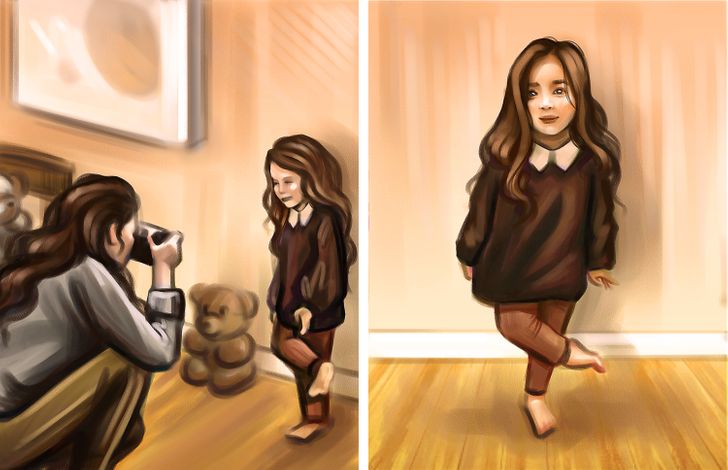
Once you’ve lost your fear of lying on the floor, do it as often as you can. You can play with a mat or a rug and ask your child to simply imagine that it is something else, like sand or the sea. Take pictures of various natural poses and at different angles.
- Trick: Dress your child in neutral colors and make sure there are a few elements in the room (if it’s just the rug or carpet, it’s better).
11. Capture moments with their pets
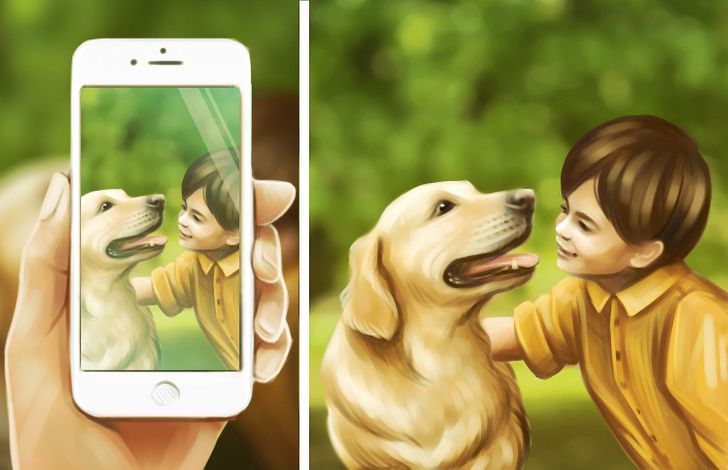
The family dog, cat, or turtle can also be a good ally when it comes to taking memorable photographs. Kids love their pets and enjoy spending time with them. Let them play and have fun, you’ll see that photographing children and animals is not so difficult after all, as long as you let them be.
- Trick: Try to take photos outdoors, like in the garden or backyard. Focus on framing from the waist up to capture the expressions of both the child and the animals.